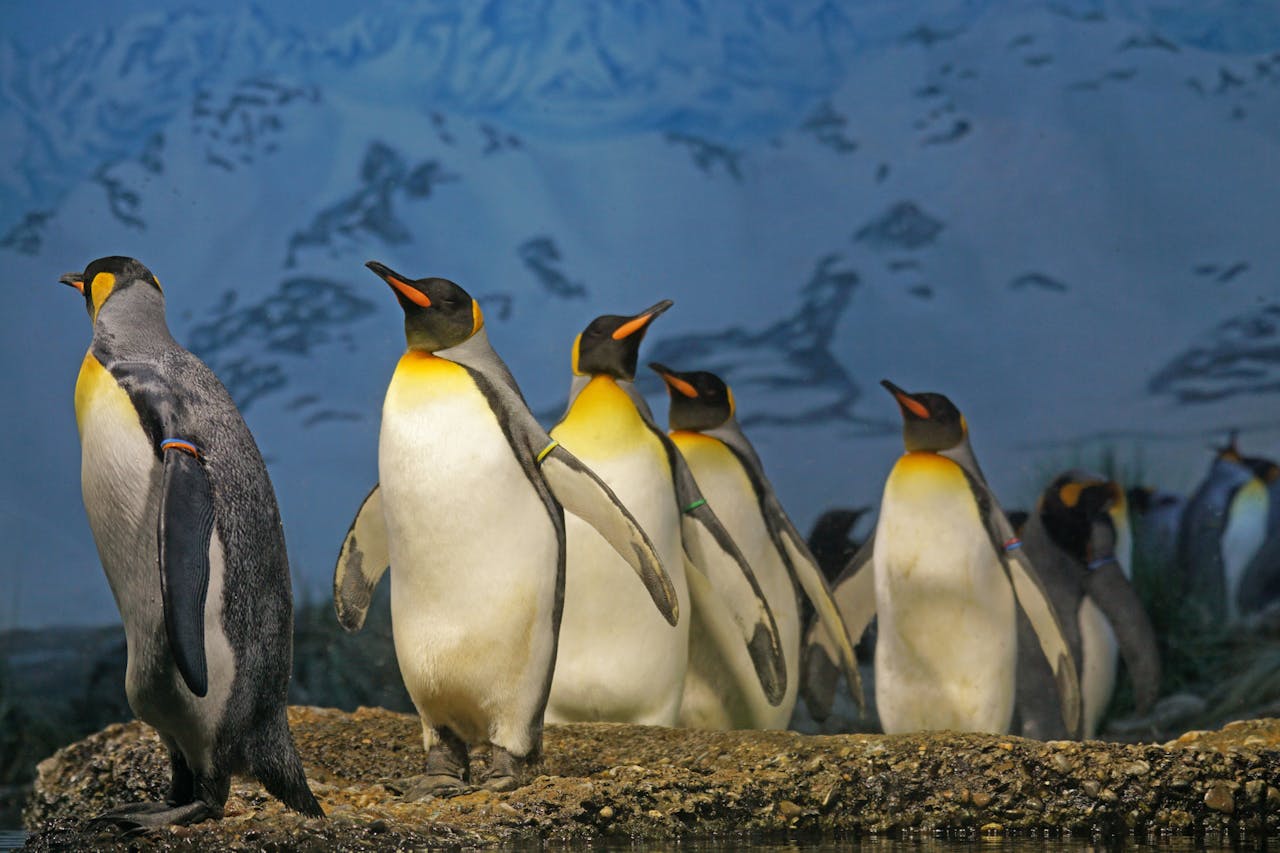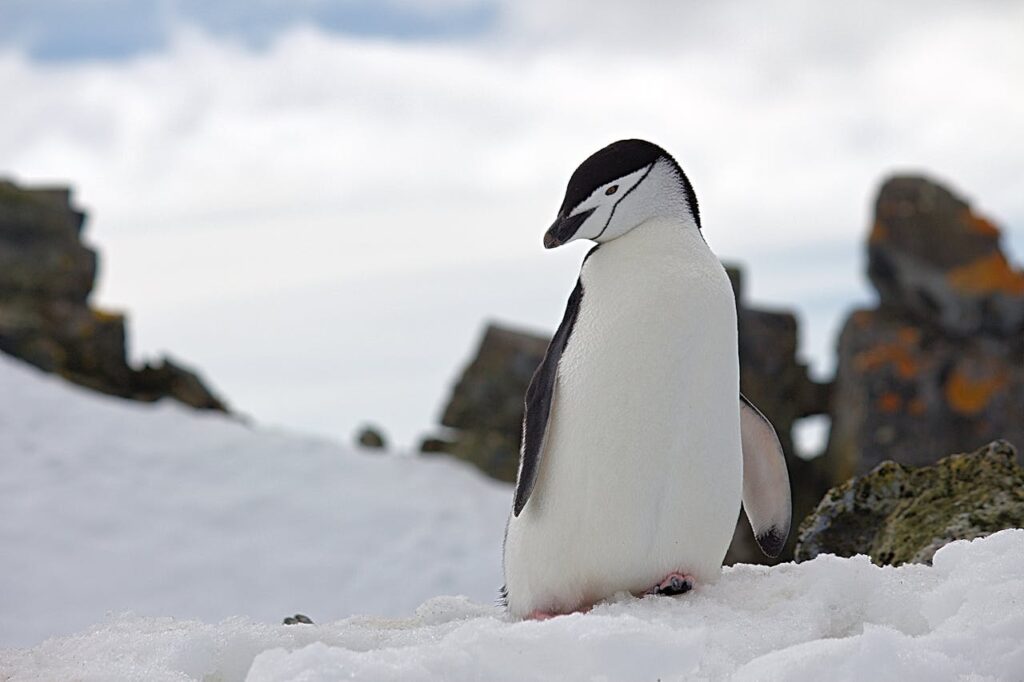Look: A Really Rare Golden Penguin Was Found Living Among 120,000 King Penguins on a Remote Island

In the heart of South Georgia, where tens of thousands of king penguins gather in perfect monochrome, something extraordinary appeared. A single flash of gold among 120,000 birds. No Photoshop. No costume. Just one bird, boldly different, stepping out of the pattern and into the lens of wildlife photographer Yves Adams.
In a world where black-and-white is the standard, what does it mean to be yellow? In this piece, we’ll go beyond the viral photo to uncover the science, the debate, and the deeper reflections this bird invites us to consider—about evolution, difference, and the responsibility of how we share stories from the wild. Because sometimes, the most powerful lessons come wrapped in feathers.
The Moment on South Georgia
In December 2019, wildlife photographer Yves Adams disembarked on a remote beach in South Georgia, surrounded by the rhythmic hum of a massive colony—approximately 120,000 king penguins—all clad in their classic tuxedo plumage. He was deep into a two-month expedition through the South Atlantic when an unexpected sight stole his focus. While unloading safety gear, Adams watched penguins moving toward shore. That’s when he noticed something impossible.
It wasn’t black. It wasn’t white. It was glowing yellow. Adams recalled, “I’d never seen or heard of a yellow penguin before. There were 120,000 birds on that beach, and this was the only yellow one there.” They dropped everything. “We all went crazy when we realized. We dropped all the safety equipment and grabbed our cameras.”
Despite the thick presence of elephant seals, fur seals, and penguins, this golden bird came within clear view. Adams later shared, “We were so lucky the bird landed right where we were. Our view wasn’t blocked by a sea of massive animals. Normally it’s almost impossible to move on this beach because of them all.”
He captured dozens of photos—but then paused. “I took thousands of photos during that time, especially as the time of year meant it never went dark in the Antarctic,” Adams explained. Only after combing through his vast collection did he finally release the shots, revealing what many believe to be the first documented sighting of a golden king penguin.
What started as a fluke of luck became a spark that ignited the world’s wonder—and a scientific mystery that endures.
What Could Explain the Color
The golden hue that made the penguin so mesmerizing wasn’t just a visual marvel—it was a biological anomaly. But what exactly caused this deviation from the classic king penguin pattern?
Scientists believe the bird’s unusual appearance is the result of a rare genetic condition. Most agree it falls under the umbrella of pigment disorders, but the exact diagnosis is up for debate. The most widely proposed explanation is leucism—a genetic mutation that partially suppresses melanin, the dark pigment responsible for black and brown coloration in feathers, skin, and eyes. Unlike albinism, which eliminates all pigment, leucism allows some to remain—typically preserving yellow and orange hues.
Dee Boersma, a renowned conservation biologist and professor at the University of Washington, weighed in on the case. “This penguin is lacking some pigment so it is [leucistic],” she told Live Science. “True albinos have lost all pigment.” Notably, Boersma observed that the penguin still had a brownish head, suggesting the retention of some melanin, which is consistent with a leucistic condition rather than full albinism.
But not all experts agree. Kevin McGraw, an integrative behavioral ecologist at Arizona State University, challenged that interpretation. “I wouldn’t call the bird leucistic,” he said. “It does look albino from the perspective that it lacks all melanin in its plumage, feet and eyes.” However, he added an important caveat: without laboratory testing, any conclusion is speculative. “We’d need feather samples for biochemical testing if we aimed to unequivocally document whether melanin is present,” he explained.
This uncertainty highlights how complex and context-dependent color mutations can be. According to the Australian Antarctic Program, penguins can exhibit unusual coloring for a variety of reasons—ranging from injury and disease to dietary changes or genetic mutations. Among these mutations, some birds become melanistic, developing too much melanin and appearing entirely dark. Others may be albinistic, lacking all melanin entirely and appearing white. Then there are birds like this golden penguin, which seem to fall somewhere in between—retaining their yellow tones but losing the darker hues that define their species’ iconic look.
Whether leucistic, albino, or something in between, what’s certain is this: nature doesn’t always follow the rules. And sometimes, it leaves even scientists asking more questions than they can answer.
The Science of Penguin Yellow
When the golden penguin walked into frame, it wasn’t just remarkable for what it had lost—it was unforgettable for what it still carried. That glow of rich yellow wasn’t borrowed from sunlight or spilled from its surroundings. It was born from within.
Unlike most birds, which rely on carotenoids from their diet to produce yellow or red coloration, penguins are different. They synthesize their own yellow pigment—a compound called spheniscin, named after their biological family, Spheniscidae. This pigment is not just rare. It is molecularly unique.

In a 2013 peer-reviewed study published in the Journal of the Royal Society Interface, scientists used advanced spectroscopic techniques to analyze yellow penguin feathers. What they found was astonishing: spheniscin didn’t match any known pigment in the avian world. It was chemically distinct from carotenoids, melanins, and all four other previously known pigment classes. The researchers concluded that penguins may possess a sixth, entirely separate class of feather pigment, stating, “The pigment that generates the yellow color of penguin feathers appears to represent a sixth, poorly characterized class of feather pigments… This pigment class, here termed ‘spheniscin’, is displayed by half of the living penguin genera.”
This discovery reframes how we interpret the golden penguin’s appearance. The yellow that remained was not simply a residue of what was lost—but a biological feature that survived the mutation. In the absence of melanin, spheniscin shone brighter, unmasked and unconcealed.
Hence, the golden penguin didn’t just break the pattern. It revealed what lies beneath it—a color that no other bird family can claim, created not from consumption, but from evolution’s own chemistry.
Why We Are Drawn to What Doesn’t Fit
There’s something in us that stops when we see the unexpected. A golden penguin. A blue lobster. A one-in-a-million event. It shakes the pattern. It interrupts the scroll. And for a brief moment, we feel like we’ve seen something sacred.
But why? Psychologists refer to this as salience bias—our minds are wired to focus on what breaks the mold. In a world of repetition and routine, the rare becomes meaningful simply because it refuses to blend in. It catches us off guard. It invites curiosity. It disrupts the background noise of sameness.
Yet it’s not just visual disruption that makes us stop. It’s symbolic weight. We don’t just see a golden penguin—we see ourselves. We project our own desire to stand out, to be seen, to be different in a world that often demands sameness. The bird becomes a mirror. Its glow feels personal.
Culturally, this explains why stories like this rise so fast. Not just because they’re rare—but because they’re emotionally resonant. They stir our inner longing for the extraordinary. And in an age that often feels too fast, too loud, too crowded, something pure and unexplainable becomes spiritual.
But here’s the quiet paradox: the more we celebrate rarity, the more we risk misunderstanding it. To honor the rare isn’t to mythologize it—it’s to observe it with care. To ask not just “What does this mean to me?” but “What does this mean for the creature itself?”
A golden penguin doesn’t exist to teach us a lesson. It exists, full stop. Our lessons come after—if we’re willing to listen beyond the first impression.

More Than a Glimpse: What the Golden Penguin Asks of Us
The golden penguin didn’t ask to be rare. It simply was. And when we saw it, we did what humans do—we shared it, speculated about it, turned it into meaning. But the power of that moment wasn’t in its virality. It was in the silence it created. For a second, we paused—not just to look, but to feel awe.
That pause is where something deeper begins. In a world that rushes to label and explain, the penguin reminds us that not everything must be understood to be respected. It is enough, sometimes, to witness with care. To ask better questions. To carry wonder more gently. And to remember that nature doesn’t owe us clarity. It asks only that we pay attention.
The bird walked forward. The rest is up to us.
Loading...

